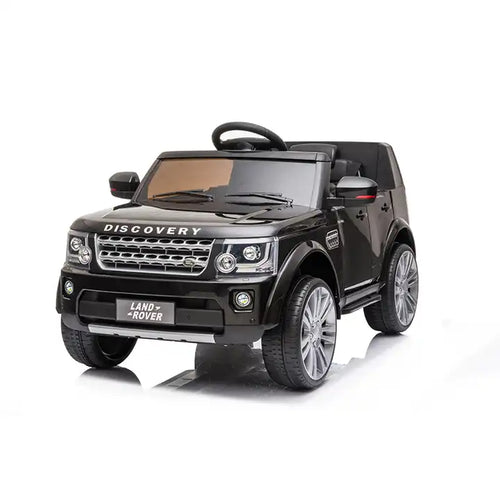New Reasons On Picking Ride On Toys
New Reasons On Picking Ride On Toys
Blog Article
What Are The Advantages Of Electric Vehicles Vs Remote-Controlled Cars For Kids?
Remote and electric children's cars offer different features and benefits and cater to various preferences and needs. Here are the benefits and features of electric vehicles for children.
Independence - Children can operate their electric cars on their own. They feel in control of the car and its surroundings.
Motor Skill Development: Driving an electric car requires motor skills like steering or braking, acceleration, or both. This helps develop coordination and spatial understanding among children.
Realistic Experience. Kids' electric vehicles are usually equipped with realistic features, like working headlights, the sound of engines and horns. This creates an engaging and immersive experience.
Outdoor Play- Electric children cars are made to be used outdoors on surfaces that are paved, such as playgrounds as well as driveways or sidewalks. Children can explore and have fun in the fresh air.
Physical Activity Driving an electric vehicle requires physical exertion, because children utilize their feet and hands to operate the controls, promoting movement and exercise.
The advantages of remote-controlled children's cars
Remotely controlled cars for kids Parents can monitor their children's play, and provide assistance. This is an added layer of security.
Guided Learning – Parents can utilize the remote control to instruct their child to teach the child how to safely operate the vehicle, eventually transitioning to autonomous driving as the child develops in confidence and mastery.
It is versatile - It can be operated by a child on their own or remotely by the parents, providing flexibility and adaptability to different skill levels.
Safety Parents can take action to stop collisions and accidents from happening by using remote control to stop the car or steer it away from obstacles or hazards, enhancing safety during play.
Remote-controlled cars for kids They are fun for children as well as their parents. They can play and play with the car with each other.
Remotely controlled or electric children cars are ideally for children between 3 to 12 years old. They also rely on their preference and parental direction. Electric cars permit realistic play and independence, while remote-controlled cars are safer, provide supervision and provide an interactive experience. Read the most popular remote control childrens cars for website tips including race car toy, remote control childrens car, electric toy car, ride a toy, toy a car, car toy car toy, toy ride, electric ride on, childs ride on car, toy with car and more. . 
What Are The Models For Outdoor And Indoor Kids Cars Designed?
Indoors or out, kids car models are made to work in various situations and environments. They are constructed differently: Indoor Use Cars
Dimension and weight Cars for indoor use are generally smaller and lighter, allowing them to fit into tight spaces like bedrooms, living spaces, and hallways. They are able to maneuver through tight spaces and narrow passageways easily.
Low Ground Clarity - Indoor vehicles have low clearances so that they don't get stuck, or getting caught, upon obstacles such as carpets, rugs or thresholds. This allows the car to glide smoothly and without interruption across indoor surfaces without chance of getting stuck or falling over.
Smooth Wheels - The wheels of indoor use cars are often made of smooth materials such as rubber or plastic to provide traction and grip on smooth surfaces like hardwood floors, laminate flooring, or tile. They are designed with the least amount of sound to reduce scratching or scuffing indoor surfaces.
Limited Speed – Indoor cars generally have a limit on speed, to allow for safe and controlled driving even in tight spaces. This can help to prevent accidents and collisions with walls, furniture or other objects found in indoor spaces.
Outdoor Use Cars -
Durable Construction - Cars designed that are designed for outdoor use are constructed using durable materials. They are made of tough plastics or metals to endure the harsh elements outdoors like humidity, sunlight, and temperature variations. They are more resistant to wear and tear caused by exposure to outdoor conditions.
The higher the clearance of the ground, the better able they are to deal with bumps and uneven terrain. This enables them to navigate rough surfaces like dirt, grass, or gravel, without becoming stuck or causing damage.
Traction Tires - The tires that are used on vehicles that are outdoors usually include treads or patterns that are designed to improve the grip and traction of vehicles on roads which are slippery or uneven. This allows for better control and stability while driving on uneven terrain.
Weather Resistant Components - Cars for outdoor use may contain weather-resistant parts, like sealed electronic components, waterproof casings or rust resistant materials. These elements protect the car from moisture and environmental damages. This permits the vehicle to stand up to water, puddles or mud and still be able to perform.
Outdoor-use cars have higher speed limits to allow for large spaces and distances. It offers a thrilling adventure for kids who want to explore outdoor spaces.
When considering these design elements and features, parents can select a children's car model that is tailored to their specific usage requirements and surroundings, whether indoors or outdoors, ensuring a safe, enjoyable and lasting play experience for their child. View the best JCB ride on toys for more info including toy car, childs ride on car, cars pedal car, toy car for car, toy car for car, toy cars, ride on car, ride on digger, electric ride on, electric rideons and more. . 
What Are The Options For Children's Remote-Controlled Vehicles? What Are Some Of The Pros And Con?
Remote control cars for kids, also called RC or remote-controlled vehicles are available in a variety of designs, sizes and price points. They're made to accommodate the needs of different budgets and tastes. Here's a breakdown of the pros and cons, and sizes of remote-controlled children's cars.
Electric RC Cars – Battery-powered remote-controlled cars that are suitable for use indoors or outdoors. The cars are available in different styles such as buggies or trucks.
Nitro RC Cars – Gas RC vehicles with higher speeds and better performance. They do require a greater amount of expertise and maintenance to operate. Electric RC cars are less bulky and less expensive.
Scale Models Remote-controlled replicas of real-life vehicles, which include cars, trucks aircrafts, and boats. The sizes of scale models range from 1-10 to 1--24. The larger models provide greater detail and more realism.
Sizes -
Remote controlled cars for children are available in different sizes. From miniature to full-scale replicas, they come in a variety of dimensions and shapes. The size of the car will affect its speed, performance and handling characteristics.
Micro-sized cars are small and light, making them suitable for indoor use and for children who are younger. The larger models provide more performance and endurance, making them ideal for off-roading and racing.
Prices
The price of a remote-controlled car for children varies depending on its size, features, manufacturer, and the build quality.
Micro-sized electric RC cars can range from $20 to $100 The larger-scale electric and nitro RC cars are available from $100 to $500 or more.
Model cars of scale and high-end hobby RCs range from several hundred and over a 1,000 dollars, depending on how detailed and strong they are.
What are the pros and cons?
Pros -
Adults and kids can both enjoy the excitement and fun of remote-controlled vehicles.
Operating an R/C car helps children develop spatial awareness, problem solving and hand-eye coordination.
Social Interaction - RC cars can be enjoyed by family and friends, and encourage interactions and socialization.
Customization - A lot of RC vehicles are able to be upgraded using accessories and upgrades, which will improve their performance as well as appearance.
Cons
Cost - A high-quality model with advanced features can be expensive, especially hobby-grade models.
Children may find it difficult to control the RC cars for the first time.
Maintenance is a must for car owners who own RC vehicles. They must regularly clean or lubricate their vehicles, as well as make repairs or replace parts.
Safety concerns - RC car safety could be affected due to electrical hazards, collisions, and other dangers in the event that the vehicles aren't used with caution and supervision from an adult.
In general, remote-control children's vehicles can be an enjoyable and educational experience for children of all ages. But, when selecting the model that's right for your child, it is important to take into consideration factors like price dimensions, size, features, and safety. Hobby-grade RC automobiles are more suitable for older and enthusiast children and simpler models are more suitable for young and novice children. Check out the recommended McLaren kids car for site examples including kids electric cars, pedal car, ride ons, toy cars toy car, electric two seater cars, car for toy, two seater childrens electric cars, toy the car, electric toy car, car toy car toy and more. .